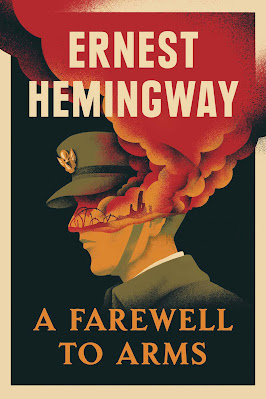Considering My Impressions of the Novel 'A Farewell to Arms'
"A Farewell to Arms" is a classic novel written by American author Ernest Hemingway, first published in 1929. The novel is set against the backdrop of World War I and is a poignant exploration of love, war, and the human condition. Hemingway's spare and economical writing style, known for its iceberg theory, is evident throughout the novel, allowing readers to infer deeper meanings beneath the surface.
The narrative is presented from the perspective of Frederic Henry, an American ambulance driver serving in the Italian army. The story begins with Henry's experiences on the Italian front, and soon he meets Catherine Barkley, an English nurse. Their relationship becomes the focal point of the novel, and as their love story unfolds, it becomes a poignant exploration of the impact of war on individuals and relationships.
The novel's title, "A Farewell to Arms," reflects the recurring theme of farewells and loss. It draws from a poem by the 16th-century poet George Peele and serves as a metaphor for the characters bidding farewell to their innocence, ideals, and even life itself in the face of the brutalities of war.
As the story progresses, Henry and Catherine's love deepens, providing a counterpoint to the war's chaos and destruction. Hemingway portrays their relationship with a mix of passion and detachment, typical of his writing style. The characters are often stoic, facing the uncertainties of life and war with a sense of fatalism.
The war serves as a harsh backdrop, highlighting the brutality and futility of armed conflict. Hemingway, drawing from his own experiences as an ambulance driver during World War I, vividly captures the chaos, fear, and despair on the front lines. The novel depicts the disillusionment felt by many soldiers as they confront the senselessness of war, with a pervasive theme of existential nihilism.
Hemingway's portrayal of the characters is notable for its complexity. Frederic Henry, the protagonist, evolves from a carefree and detached individual to a man deeply affected by love and loss. Catherine Barkley, on the other hand, embodies a mix of strength and vulnerability, coping with the uncertainties of war and the emotional toll it takes on her relationship with Henry.
The novel also delves into the concept of masculinity in the context of war. Hemingway's characters are often stoic and reserved, adhering to a code of conduct that values courage and endurance in the face of adversity. Yet, beneath the surface, the characters grapple with the psychological and emotional toll of war, challenging traditional notions of heroism.
The novel's climax revolves around the tragic events that unfold as Henry and Catherine attempt to escape the war-torn landscape. The narrative takes a somber turn, emphasizing the inevitability of loss and the fragility of human existence. Hemingway's stark prose heightens the impact of these events, leaving a lasting impression on the reader.
In its exploration of love and war, "A Farewell to Arms" is a powerful commentary on the human experience. Hemingway's writing style, characterized by its simplicity and understatement, allows readers to engage with the novel on a profound emotional level. The novel's enduring relevance lies in its universal themes of love, loss, and the search for meaning in the face of life's inherent uncertainties.
In conclusion, "A Farewell to Arms" stands as a masterful work of literature that transcends its historical context. Hemingway's exploration of the human condition, set against the backdrop of World War I, continues to resonate with readers, offering a timeless meditation on the complexities of love and the harsh realities of war.





No comments:
Post a Comment